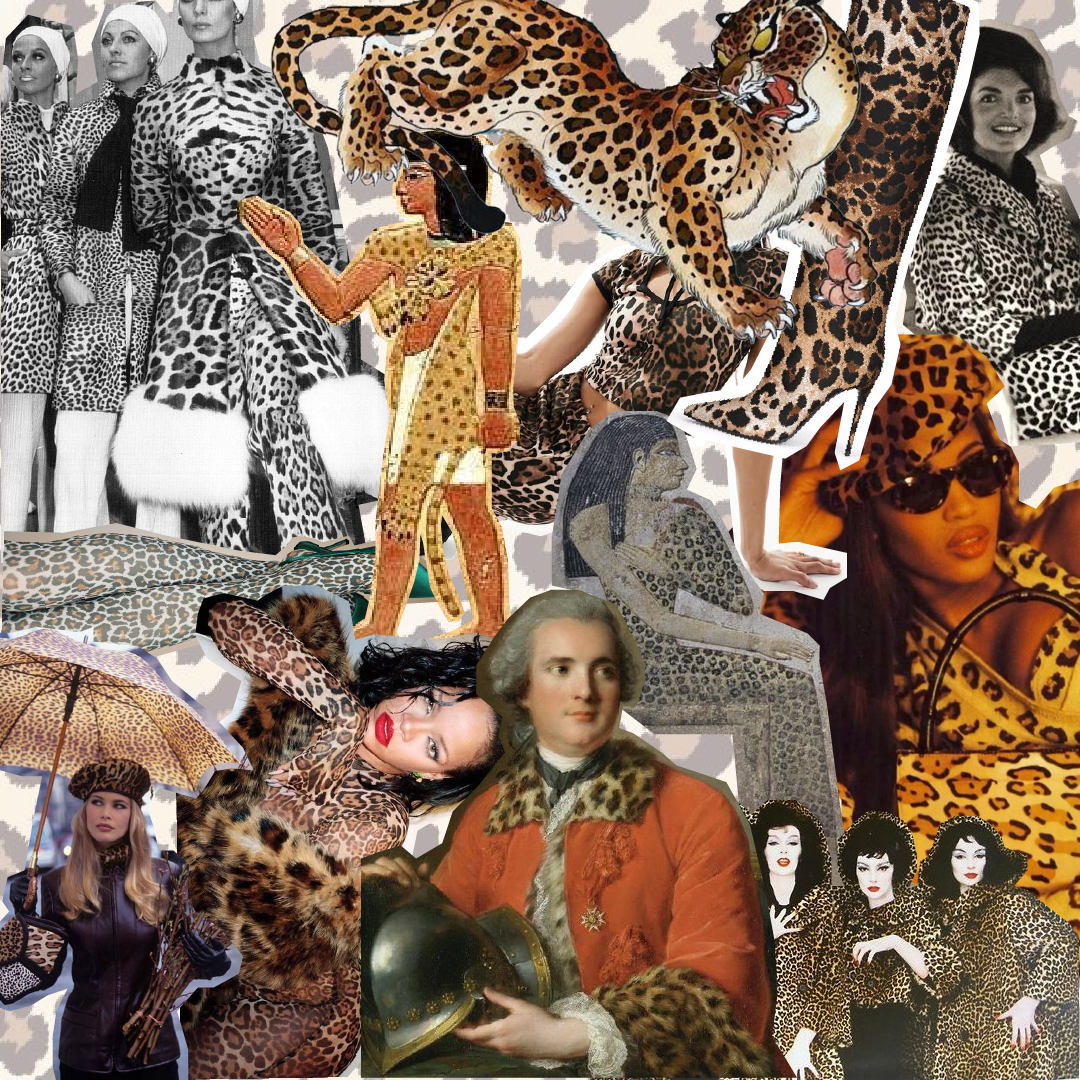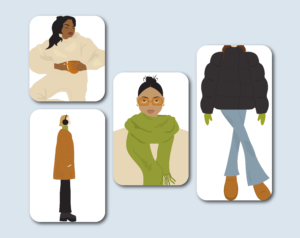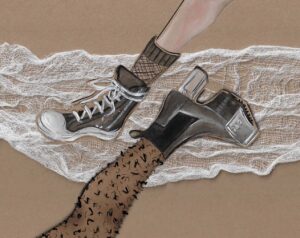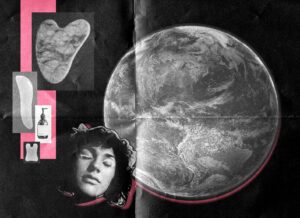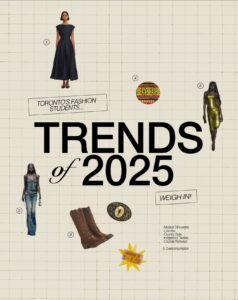AUTHOR: Gabrielle Rogozynski
GRAPHIC DESIGNER: Jasmine Natan
COPY EDITOR: Eishvinder Gill
Leopard print is having a major moment right now; it can be seen everywhere, from celebrities like Sabrina Carpenter wearing it on the cover of W magazine’s fall 2024 issue to countless fashion videos on your TikTok For You Page. However, leopard print is more than just another passing trend. This article will explore leopard prints’ rich history and cultural significance from its roots in ancient societies to its mid-century rise as a symbol of rebellion and femininity.
The print began to reach heightened popularity at the beginning of this year when items like the Leopard Print Adidas x Wales Bonner Sambas and the shortlived term ‘mob wife aesthetic” were trending on social media. Leading fashion brands such as Christian Dior, Balenciaga, and Isabel Marant wildly incorporated leopard print in their Fall/Winter 2024 collections, and fast fashion brands quickly followed suit. You can walk into just about any store right now and find a handful of leopard print pieces.
Though leopard print is nothing new, it hasn’t always been worn by the masses. Over time, its meaning has been shaped by those who wear it. With its reputation bouncing between ‘classy’ and ‘trashy’ over the years, the print is deeply connected to notions of class, gender, and sexuality.
Leopards wore the print long before humans ever did. Most commonly found in Africa, Asia, and the Middle East, they are considered one of the ‘great cats’ alongside tigers, lions, and jaguars. Leopards have the unique ability to roar, a vocalization shared only among these four cats, run up to 30 miles per hour, and climb trees while carrying prey up to three times their body weight. So, it is not surprising that many ancient societies worshiped leopards for their power. However, this did not stop people from hunting and wearing them (Weldon, 2018).
Wearing leopard print can be dated back to a time long before people posted ootds to their highlights reel. In many societies ancient, only fierce hunters and warriors who risked their lives to kill the animal had the right to wear the fur unless they were royalty, in which case it may be presented to them as an offering of loyalty (Weldon, 2018). In Ancient Egypt people with high nobility are often pictured in leopard garments, a famous limestone painting from 2590–2565 BCE shows the Egyptian Priestess Nefertibet draped in leopard skin in her tomb at Giza. Leopard print also appears in many cultures’ mythologies worldwide; the Egyptian goddess of wisdom was frequently depicted wearing a leopard gown (Weldon, 2018).
The fur trade was a significant driver of international trade, but it was not until the 1600s that intercontinental trade became more common. At the time, leopards were alot more populous in Eastern Europe, so naturally, their fur found its way into the closets of royalty. The larger pellets of spotted cats, particularly lynx and leopard from Eastern Europe and Asia, were oftenworn on the shoulders of generals and the saddles of esteemed military figures. The fur evoked a sense of worldliness, as well as physical and political influence (Weldon, 2018).
For centuries, the spots continued to be associated with high status. The wealthy class of Europe in the 1800s had a fascination with ancient cultures, and women in portraits from the Belle Epoque Era often appeared dressed as goddesses draped in the precious pelts. At this point, textiles were solely handcrafted, limiting self-expression through fashion to those with the means to indulge (Weldon, 2018).
With the introduction of mass-produced fabrics and garments in the Twentieth century, clothing that was not purely for function became accessible to a much broader demographic. In the 1930s, synthetic fibres were developed. The mechanization of factories and the production of cheaper fabrics made it possible for people outside the highest ranks of society to afford a few novelty items; leopard print was a popular choice (Shade, 2018).
In 1974, Christian Dior debuted his ”New Look” collection, which showcased leopard as a print rather than a fur (Ralph, 2023). He titled the dress ”Jungle” after the leopard motif he had developed with silk manufacturer Bianchini-Férier for the collection (La Galerie Dior) declaring, ”If you’re fair and sweet, don’t wear it.”. Dior was the first of any designer to feature leopard print on a runway. With its place secured within the high fashion world, the print became a staple (Weldon, 2018).
Around this time women’s roles both at home and within society were undergoing rapid changes and fashions were evolving to reflect this. The emergence of new media allowed the public to witness these shifts first hand. Thanks to the flourishing film industry this sense of freedom, self determination, and style were made visible to the world. Leopard print was commonly used in glamorous ways in early films to evoke the image of the sophisticated world traveler or the untamable woman trope (Weldon, 2018).
Popularized by Hollywood, sex symbols like Marlyn Monroe and Bridgette Bardot, leopard print became the pattern women wore closest to their skin. Over the 1950s, It became a marker of eroticism, establishing itself as a staple in women’s lingerie and swimwear (Eglen, 2018).
Women were being photographed more than ever and in less clothing than ever with one star after another appearing in the polarizing print. Pinup queen Betty Page often designed her own leopard print bikinis and robes. While actress and Playboy model Jayne Mansfield, known for her flashy bombshell persona participated in publicity stunts in a leopard spot bikini and was photographed with husband Mickey Hargitay in coordinating suits (Weldon, 2018).
Throughout the 1960s and 70s, more negative portrayals of women in leopard print emerged. Sexual playfulness turned to a narative of sexual desperation with the introduction of characters such as Mrs Robinson from the film The Graduate, an older woman who shamelessly pursued younger men for sexual relationships while sporting animal print in almost every scene. While her character’s actions rebelled against the societal norms of the overly devoted submisive housewife she was depicted as a predetor and is often referred to as the first ‘cougar’ (Weldon, 2018).
The ‘cougar’ remains to be a prominent image within pop culture, commonly characterized as a predatory, financially independent, middle-aged woman who is desperate to stay youthful. Consequently, the meaning of the print is often defined by age, enforcing the belief that leopard print and fashion in general is something for young individuls. Older women in leopard print are deemed desperate or washed up, while in contrast, younger women in print are viewed as sexy and easy targets (Eglen, 2018).
First lady Jacqueline Kennedy had a significant influence on American culture and style at the time. She embodied the image of the ideal housewife when the concept of the American Dream was at its height, becoming one of the most visible women of the 1960s alongside one of the world’s most powerful man. When Kennedy first stepped out in a real leopard print coat in the early 60s her status and image were so flawless that rather than be compromised by the prints prevailing reputation that coat was regarded with an air of sophistication and respectability (Weldon, 2018).
The first lady sparked such a craze for leopard coats that approximately 250,000 leopards were killed for their pelts in the following years. Fashion designer Oleg Cassini, who had initially styled the coat for her, was so alarmed that he stopped working with real fur entirely, a big step for a high-end designer. Cassini became one of the most prominent anti-fur trailblazers, designing entire lines with an improved faux fur that he helped develop (Weldon, 2018). Eventually, in 1973, the Endangered Species Act banned the importation and sale of endangered species fur, including leopards (Shade, 2018).
After the turmoil of the post-war era, including John F Kennedy’s assassination, civil rights violence, and the Vietnam War, Americans were eager to have some fun. Fashion was in such a constant state of change that even Vogue magazine conceded and declared that conventional rules no longer applied (Weldon, 2018).
The emergence of rock and roll and punk throughout the 1970s and 80s signified a rebellion against the status quo, characterized by a distinct soundtrack and visual aesthetic. Rock and roll musicians defied the gendered understandings of leopard print (Eglen, 2022). David Bowie, Jimi Hendrix, Prince, Iggy Pop, Rod Stewart, and Little Richard were among the many who incorporated the print into their campy styles. The print’s ties to femininity and hypersexuality made it an ideal choice for artists who defied societal expectations of masculinity, provoking outrage from conservative audiences (Weldon, 2018).
While rock ‘n’ roll historically excluded women, it nonetheless promoted sexual freedom and explicitness in a way that inspired them. The intense attraction many women displayed towards androgynous dressing rock stars challenged the idea that traditional representations of masculinity are the only form of gender expression women can find desirable. For Rockstars in this period to put their sexual orientation into question was bold in an environment in which homophobia was very prevalent (Weldon, 2018).
The punk movement was more inclusive of female artists than other forms of rock ‘n’ roll. Wendy O. Williams, the lead singer of the Plasmatics, often wore leopard print while employing provocative on-stage theatrics such as partial nudity, explosions, chainsaws, and gunshots to visualize her rejection of conservative culture. One of William’s most iconic looks was a leopard print Vanity Fair jumpsuit styled backwards with duct tape covering her nipples for a performance in San Francisco in 1980. Many punk women wore leopard print to rebel against the expectation to conform to middle-class ideals of good taste, which often restricted them to subordinate roles within society(Eglen, 2022).
Leopard print made a comeback to mainstream fashion in the 1990s with the supermodel era. Fashion house Azzedine Alaïa, now known as Alaïa, featured supermodels Kate Moss and Naomi Campbell wearing the print from head to toe for their 1991 knit collection. To this day, Alaïa uses leopard print in their collections, and Campbell continues to wear the print like many; she has incorporated it into her signature style (Weldon, 2018).
The return of leopard print to the runway coincided with growing discourse surrounding girl power. Leopard print was extremely trendy in 1990s popular culture as women wore it to express their newfound sense of infatuation. Sported most famously by the Spice Girls, the groups promoted the idea of “Girl Power,” which aimed to empower young girls by encouraging individuality, confidence, and solidarity among women. Another prime example is Shania Twain’s music video for the hit song ‘That Don’t Impress Me Much’ in which she wore a complete leopard print outfit as she made her way home from being stranded in the desert, rejecting any man who tried to help (Eglen, 2022).
While the girl power movement of the 90s targeted young women and girls, it often overlooked older women who remained excluded from leopard print’s new feminist association. Additionally, messaging surrounding girl power was often commodified, turning feminism into a product to be marketed and bought in the form of music, film, and merchandise which ultimately embraced capitalism (Eglen, 2022).
The shopping mall hit peak popularity in the 90s when more than half of retail activity took place in these centres (Ferlaino, 2023). For those interested in exclusivity, the shopping mall was a nightmare, filled with endless racks of identical clothing that was often considered tacky. The ease of access and the ability to purchase pieces at discounted prices contributed to the perception of tackiness. The enjoyment these shoppers got from their purchases was commonly disregarded by self-proclaimed judges of good taste who believed that they lacked the sophistication and education necessary to judge the quality of their clothing (Weldon, 2018).
Amidst this landscape, weasring leopard print became a way to resist againt these standards, as it was increasingly accessible to anyone willing to embrace it. The adoption of styles by the working class which were once considered exclusive to the wealthy and elite, did not however diminish the intricate relationship between class and fashion. The upper class continues to seek out new ways to distinguish themselves which has led to further variations of ‘good’ and ‘bad’ leopard print based on factors such as colour, fabric, brand and even the pattern of the spot (Eglen, 2022). Parallels to this phenomenon can be drawn to the rise of online shopping and fast fashion throughout the 21st century.
In recent years, vintage clothing has become one of the hottest trends in fashion, defining how we dress and shop. Vintage shopping is uniquely a 20th and 21st-century practice, generally referring to clothing that is over 20 years old. Before the 1920s, vintage clothing was impractical for modern women who had more active lifestyles. It remained unpopular due to the scarcity of clothing during the Great Depression and World War II, making new items more desirable. Later in the century, vintage clothing gained popularity due to its uniqueness and higher-quality fabrics compared to mass-produced modern clothing (Weldon, 2018). While The vintage marketplace used to be mostly offline, it has become much more accessible in terms of information and inventory, thanks to online platforms such as TikTok and Depop (Hine, 2024). While all kinds of new leopard print clothing is available today, the print’s prominence throughout 20th-century fashion makes it sought-after for vintage shoppers, which notably has helped fuel the print’s current popularity.
Leopard print today is the result of thousands of years of intercontinental trade and cultural exchange. For it to have stood the test of time the garment industry had to undergo significant evolution, and women frequently had to take matters into their own hands (Weldon, 2023). As leopard print continues to capture the attention of designers, celebrities, and fashion enthusiasts, it has proven to be a timeless staple.
So, while #leopard print may be trending at the moment, don’t just wear it because everyone else is. Wear it as a form of self-expression-whatever that means to you, and remember to celebrate the women who boldly pioneered the print, allowing us to move about and dress as we please.
References
Eglen, L. (2022, December 20). A Leopard’s Changing Spots . Museum of Youth Culture. https://www.museumofyouthculture.com/leopard-print/
Ferlaino, J. (2023, October). The Evolution of Shopping Centres. Business In Focus Magazine. https://businessinfocusmagazine.com/2023/10/the-evolution-of-shopping-centres/#:~:text=The%20shopping%20mall%20would%20reach,took%20place%20in%20these%20centres
Hine, S. (2024, March 4). How vintage clothing became the hottest thing in fashion. GQ. https://www.gq.com/story/how-vintage-clothing-became-the-hottest-thing-in-fashion
Leopard print in fashion: A spotted cultural history. Underground. (2023, July 21). https://underground-england.com/leopard-print-in-history/?srsltid=AfmBOoomPaBFoGqJvy83YaUvdqEbCYyi6HDBrKCYxR5pwOJLVGvSNbgf
Shade, C. (2018, March 7). The trashy, expensive, contradictory reputation of leopard print. Racked. https://www.racked.com/2018/3/7/17053964/leopard-print-history
Weldon, J. (2018, June 26). Fierce: The History of Leopard Print . Harper.

